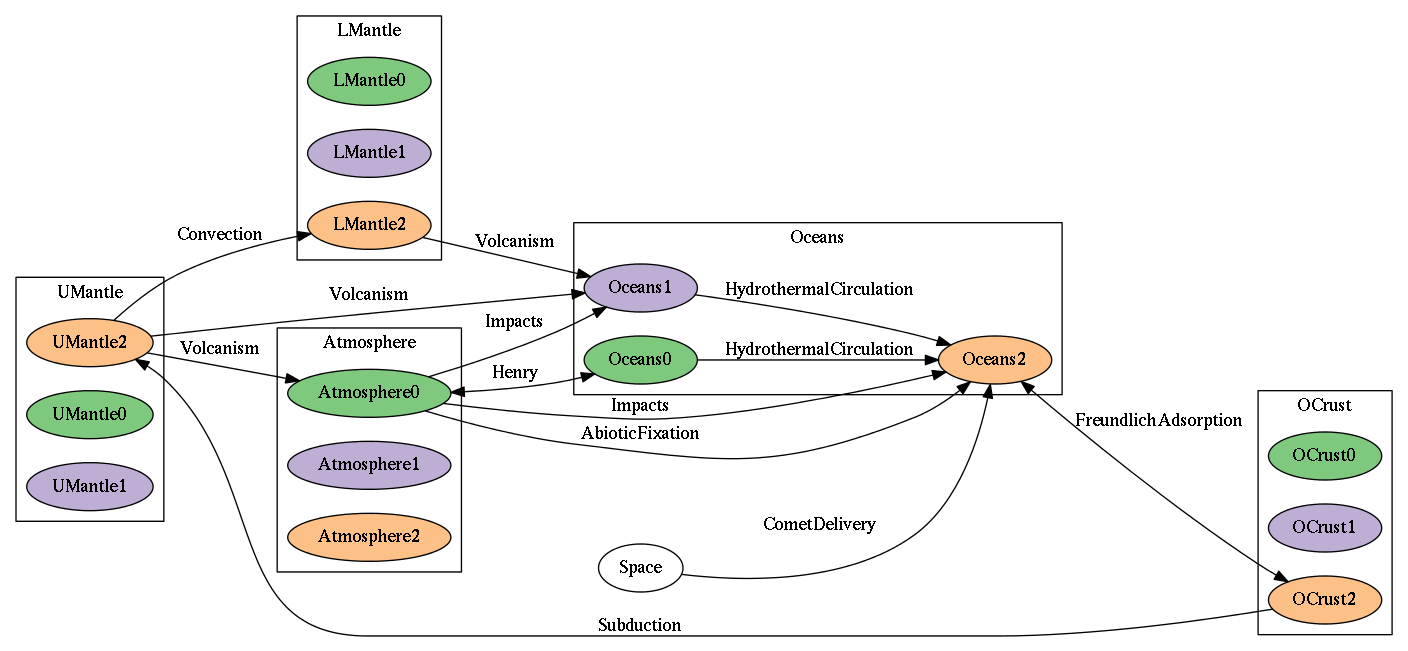Goldschmidt · A model of Earth's abiotic nitrogen cycle
Cleaves, Laneuville and Virgo, work in progress.
The fluxes of various elements between planetary reservoirs on the prebiotic Earth may have changed considerably during the course of the planet’s evolution. While much attention has been paid to the prebiotic C-cycle, especially due to its potential role in greenhouse warming, relatively little has been paid to the prebiotic N-cycle.
The amount of N in various reservoirs could have been markedly different in the past, and may have changed over time. Assuming chondritic values, the Earth’ s total N inventory should be ~2e22 kg. Presently, ~4e21 kg are in the atmosphere, so either 90% of Earth’s N is in deep reservoirs, large amounts of N have been lost over time, or the Earth is largely non-chondritic. Dissolving all atmospheric N or the entire chondritic inventory in oceans of the modern volume gives maximal oceanic (N) of 0.1 and 1 M, respectively, which would be quite conducive to prebiotic synthesis.
The Earth system prior to ~3.5 Ga is poorly constrained but b iology has undoubtedly significantly perturbed the Earth’s N-cycle. Presently, the flux of N from the atmosphere is dominated by biology, followed distantly by abiotic fixation by lightning. Biological N-cycling is tight, both fixing N from the atmosphere more rapidly than abiotic mechanisms, and also returning it to the atmosphere efficiently. In the absence of efficient remineralization, all of the N in the present atmosphere, given current rates of abiotic fixation, could be depleted in ~175 Ma.
Here we present preliminary results of a prebiological Earth -system model which takes into account atmospheric, atmosphere-ocean, ocean-sediment, and subduction processes and reservoirs to estimate the nature of Earth’s N-cycle before life began. Our model may help place constraints on the early and evolution of the abiological N-cycle.
The figure below shows the reservoirs and fluxes that we take into account (suffix 0, 1 and 2 corresponds to N2, oxidized and reduced nitrogen).
